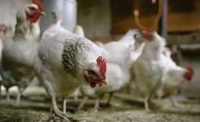The industry as a whole is focused on waste reduction — from sustainable packaging to GHG emissions reductions, the meat industry is cutting back on waste and excess. Before worrying about waste reduction for the end user, though, processors need to consider strategies to reduce wasted time, energy, labor, and materials on their end. Minimizing waste of these resources is essential to improving operational efficiency.
To gain better insight into the industry’s most up-to-date operational efficiency strategies, The National Provisioner consulted ReposiTrak, The Timken Co., and Ammeraal Beltech, or AMMEGA.
With a compliance date of Jan. 20, 2026, coming up quickly, producers need to get a head start on maintaining transparency through every component of the supply chain. Though meat producers are not covered by FDA regulations, maintaining a transparent supply chain can help to ensure operational efficiency.
“While not officially impacted by FSMA 204, meat producers need easy ways to track and store lot code information, as well as collect important safety and risk documents like Certificates of Insurance and third-party food safety audits,” said Derek Hannum, chief customer officer for ReposiTrak.
By keeping accurate supply chain data on hand, producers can tackle issues timely when they do arise.
Utilizing automated traceability can also help to eliminate unnecessary labor and cut costs, Hannum said, further optimizing operational efficiency.
While FSMA 204 does not directly affect meat producers, the rule does impact seafood producers. In addition to helping maintain transparent, streamlined, and easily accessible operations, utilizing fully automated traceability can assist seafood producers with FSMA compliance.
In addition to maintaining digital and automated records, producers need to make improvements on the production floor to increase their operational efficiency.
The Timken Co.’s application engineers Cory Langhoff and Jacob Wenzel shared how proper bearings can increase operational efficiency, noting they can lower maintenance needs and increase uptime.
“Using the proper bearing with appropriate lubricant and seals can reduce maintenance time by minimizing or eliminating the need for relubrication. Also, utilizing a high-quality bearing can lead to longer time between maintenance cycles and reduce unplanned downtime due to bearing damage.”
Bearing support is also an essential component to improving operational efficiency. Having improper-bearing housing can negatively impact operations. “Understanding the operational and environmental demands of an application and selecting the proper housing based on those demands will increase safety, product quality and ultimately operational performance.” Langhoff and Wenzel also noted the benefits of IP69K-rated bearings, including washdown protection and increased food safety.
Belting/conveying equipment also plays a major role in optimizing operational efficiency. Bobby Bauman, director of product management at Ammeraal Beltech, noted that this kind of equipment is customizable for varying producers requirements.
Though equipment needs do vary, Bauman said that two aspects are essential for conveyor belts in the meat industry: long service lifetimes and easy-to-clean properties.
For processors looking to optimize the efficiency of their belting/conveying systems, Bauman recommended maintaining hygiene and a sanitary environment, as well as having a belt that is highly flexible with a solid grip. Meat production is typically fast-paced and often of a messy nature, and producers’ belting/conveying systems must be equipped to handle those issues.
Though automation and equipment solutions can be greatly beneficial for optimizing operational efficiencies, they can also be quite costly. For smaller or mid-sized processors who might have tighter budgets, Bauman advised using easy-to-clean, flexible belts with high grip and stable production positions as a guideline.
As Bauman emphasized, “There is no one-size-fits-all solution in meat and poultry processing. Still, any meat producer — large, small or mid-sized — can follow these recommendations to begin improving their operations.




-(780-%C3%97-439-px)-(780-%C3%97-439-px)-(5).jpg?height=200&t=1665690977&width=200)
Report Abusive Comment